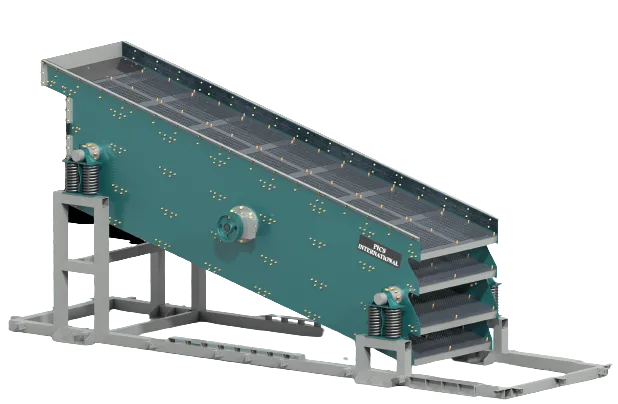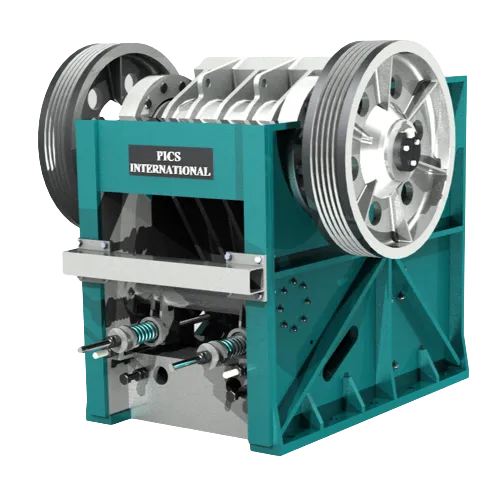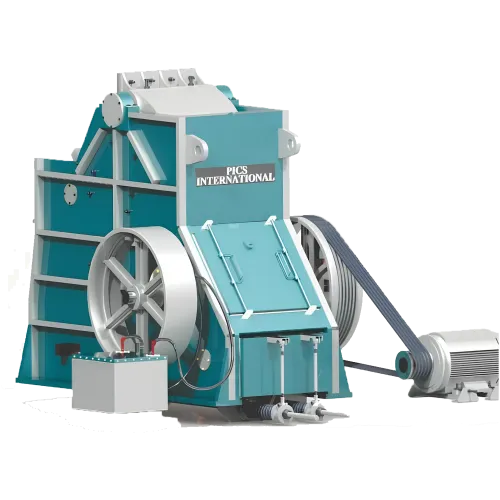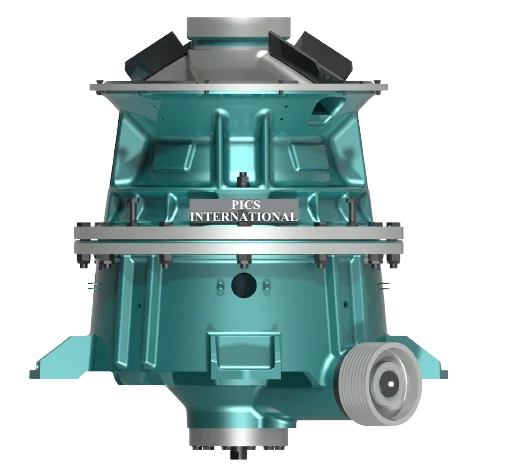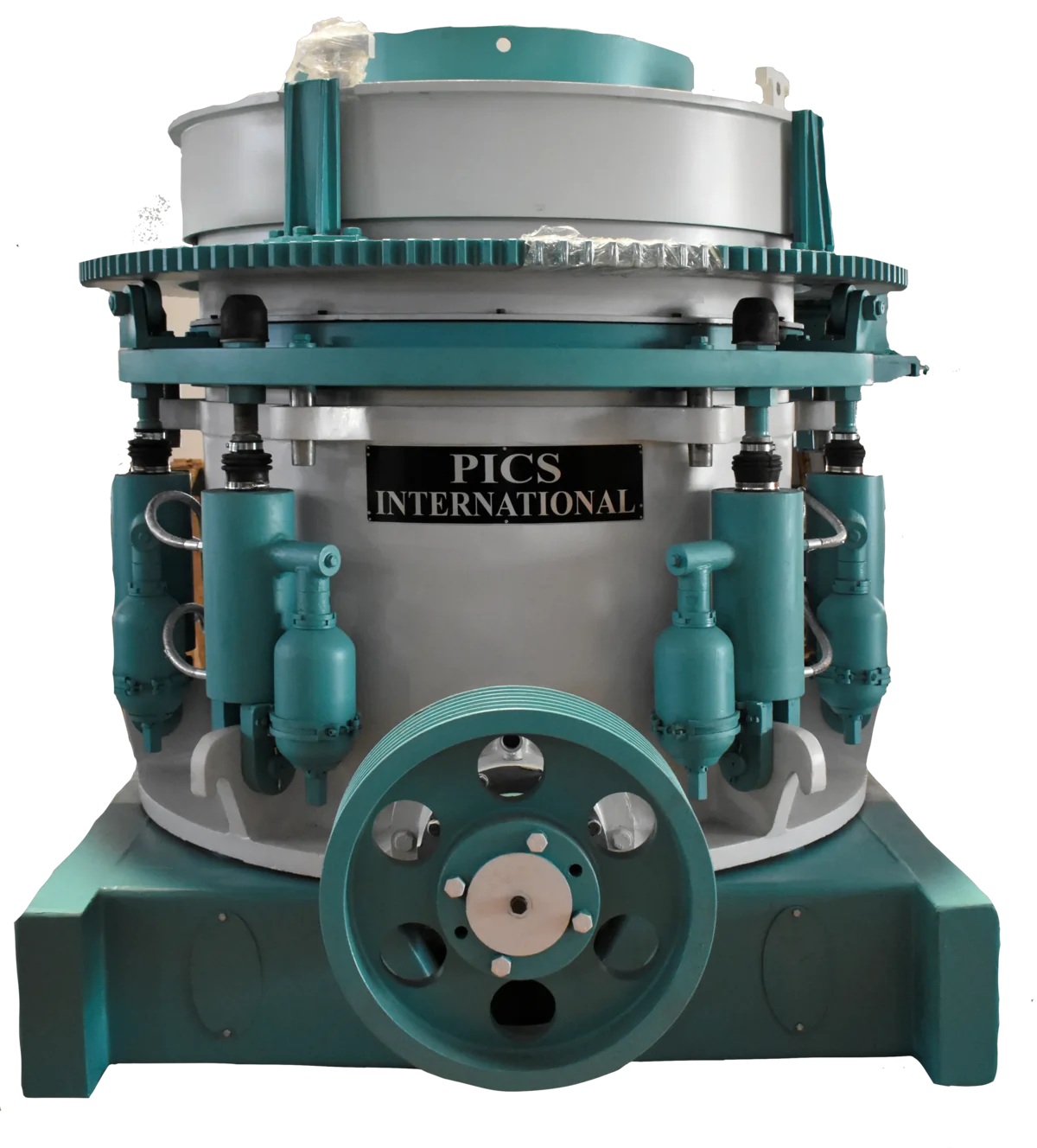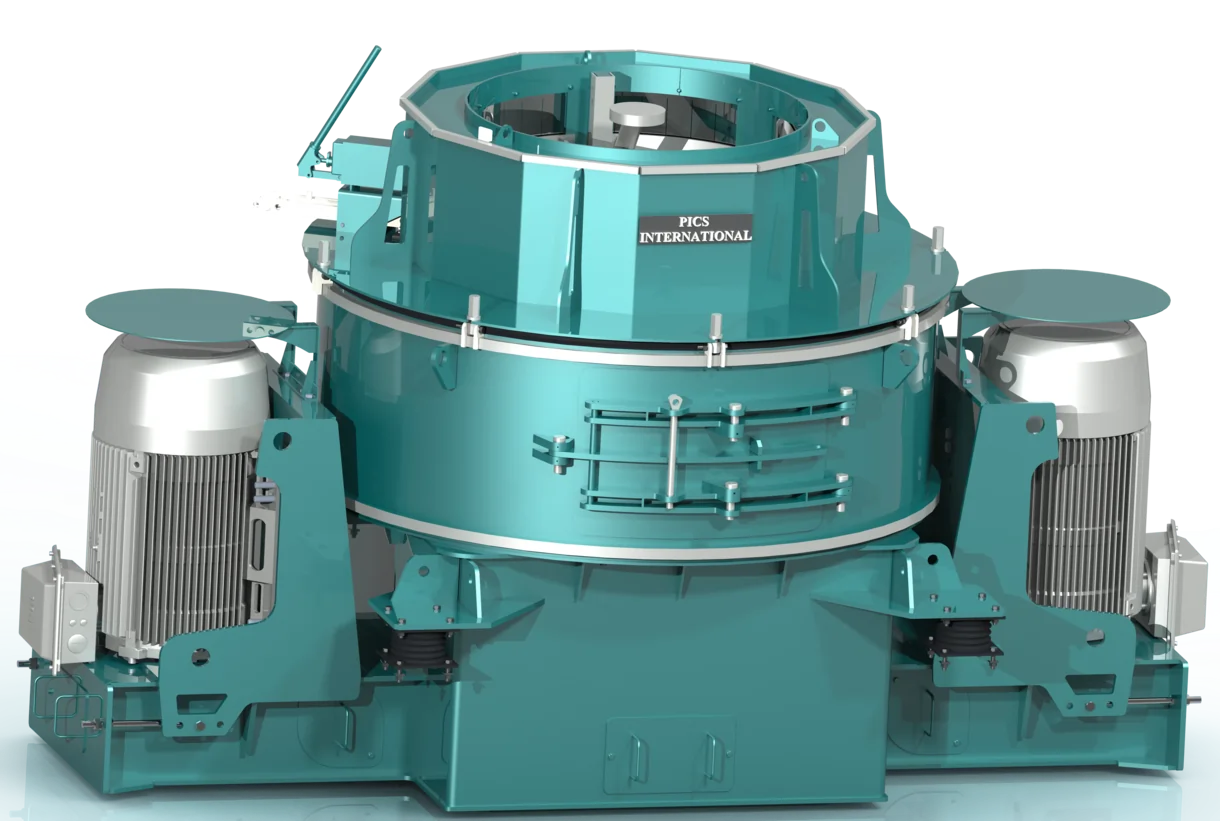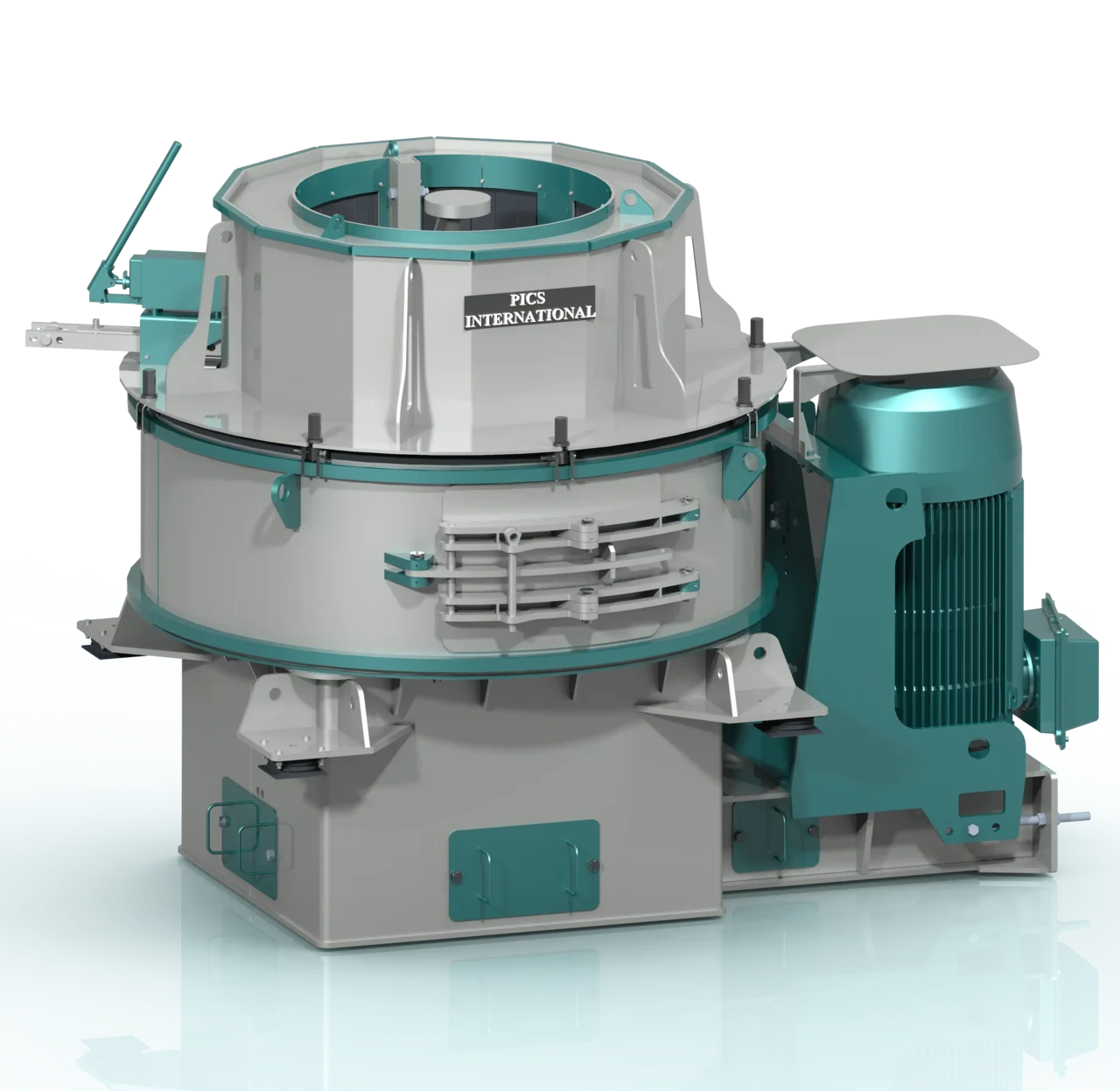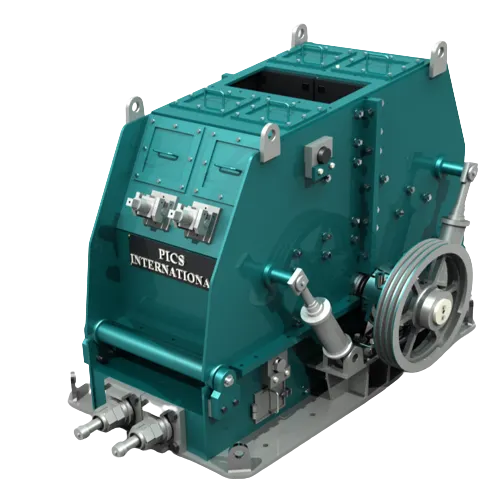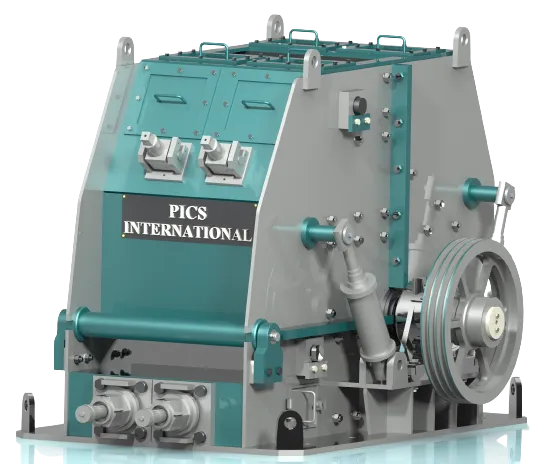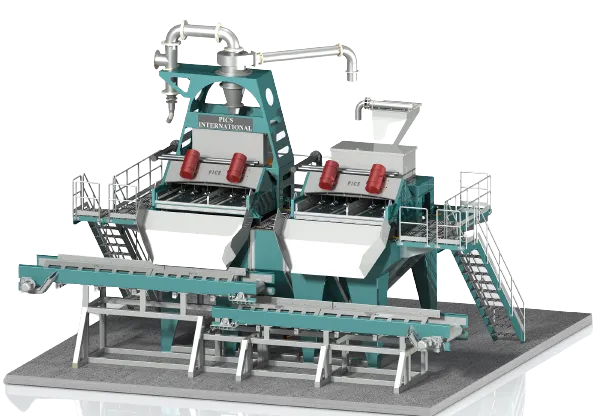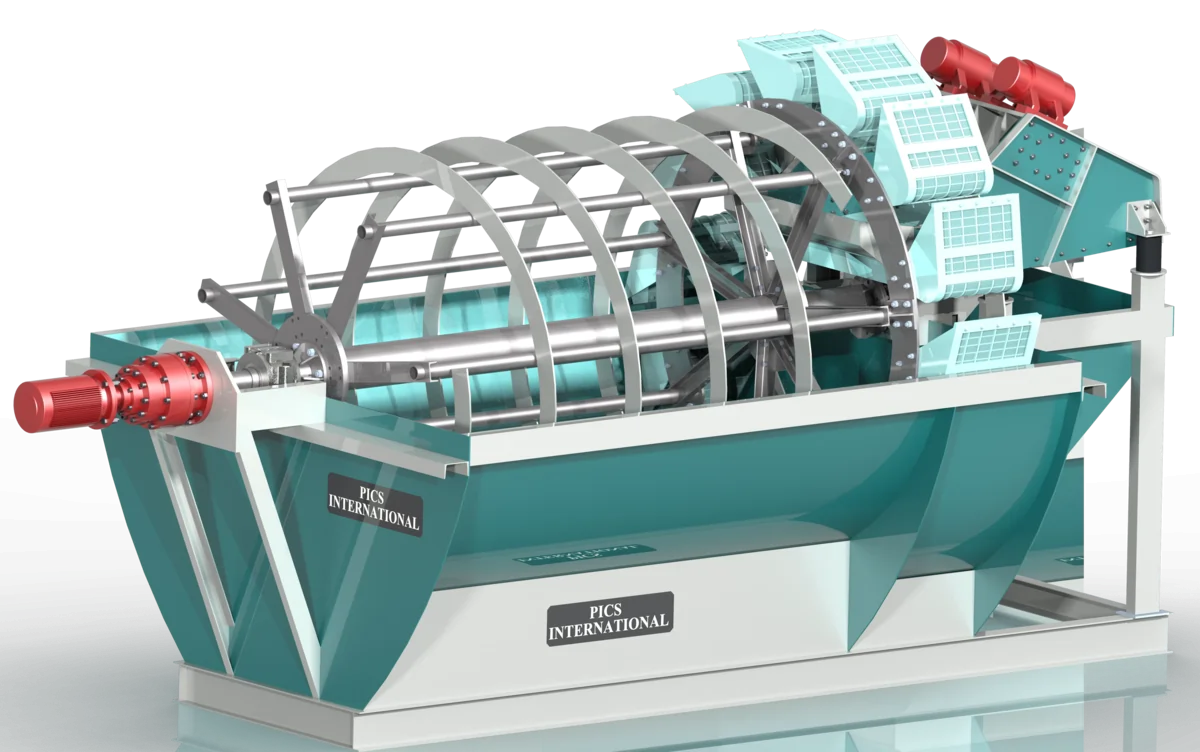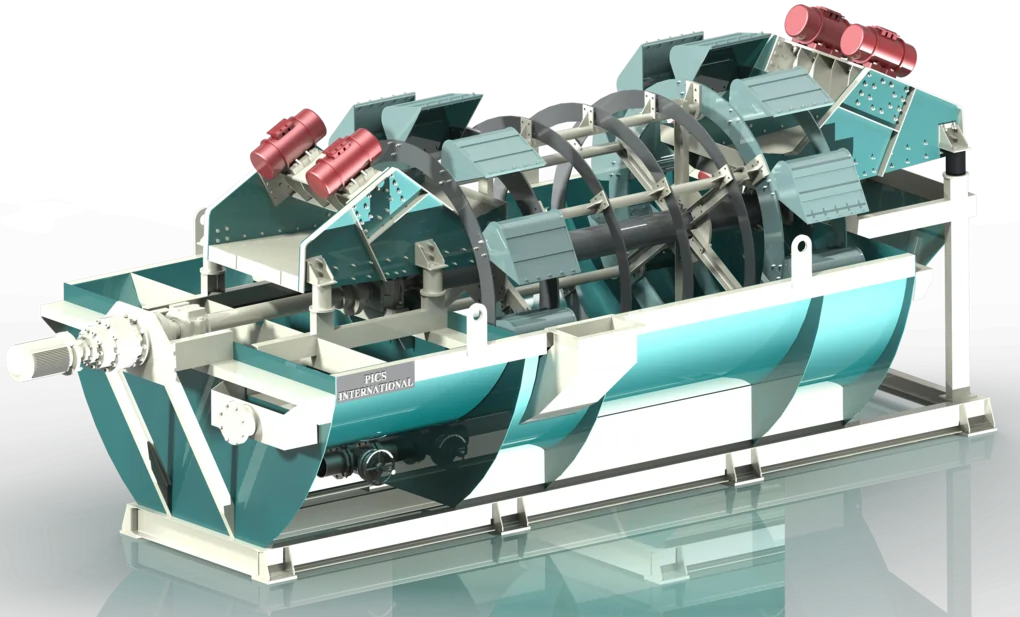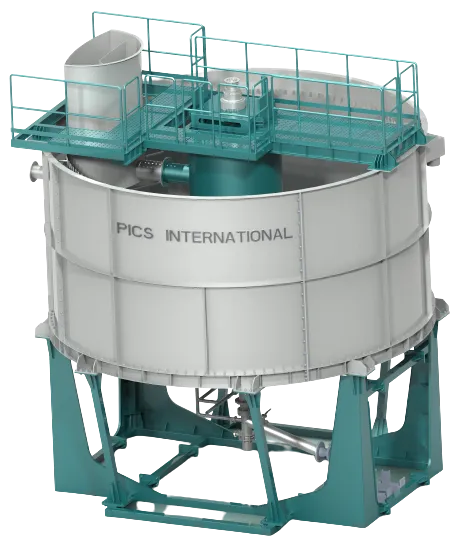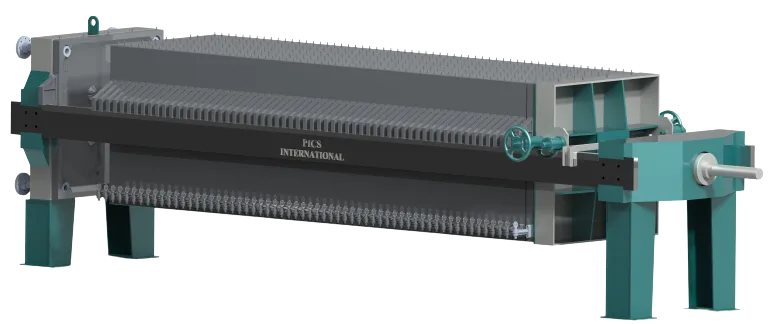-
1. Poor screening quality
The kind of feeding, equipment characteristics, operating factors, and other factors are only a few of the numerous variables that determine the screening effect. Poor screening quality is caused by clogged sieve holes, severe sieve hole wear, uneven sieve feeding, too much material on the sieve, and inadequate inclination of the sieve surface, among other factors.
- 1) Screen hole blockage
When the feed has a high mud and water content, the material will clog the sieve hole and stick to the opening. At this point, it is best to clean the sieve hole before properly adjusting the spray pressure and angle of inclination of the sieve surface.
- 2) serious wear of screen hole
Long-term usage of the screen causes the screen hole to wear out severely and negatively impacts the screening performance. The worn screen hole has to be fixed right now. The replacement of screen mesh should be taken into consideration when the wear situation is particularly critical.
- 3) Non-uniform feeding of sieve
The material cannot be evenly dispersed throughout the whole sieve surface when the feeding trough of the sieve is too small, making the sieve surface ineffective to use and affecting the screening effect. To make the sieve feeding consistent at this time, the width of the feeding trough needs to be changed.
- 4) too thick material on screen
The increase in feeding volume, clogging of the screen hole, and a low angle of inclination of the screen surface can all contribute to an excessive thickness of material on the screen. It should now be modified in light of the particular circumstances.
- 5) insufficient inclination of screen surface
The insufficient slope of the screen surface is the most frequent cause of the poor screening effect in circular vibrating screens, hence padding the back support is required. The inclination angle of the screen surface is best for practical applications when it is 20 degrees. Circular vibrating screens typically have an inclination angle of 16 to 20 degrees. The phenomena of the material on the screen not flowing smoothly or rolling upward will happen if the inclination angle is less than 16 degrees.
- 6) The motion direction of eccentric block is not in the same phase
Because two groups of eccentric blocks with the same mass must rotate in self-synchronization and reverse direction to produce a single exciting force along the vibration direction at each instant, which has a fixed angle with the horizontal direction, so that the screen box can move in a reciprocating straight line, poor screening quality for linear vibrating screens and high frequency vibrating screens may be related to the movement direction of eccentric blocks. The direction of the excitation force and the direction of the vibration will not overlap if they are not in the same phase, and effective screening will not take place.
-
2. Bearing overheating
Generally speaking, the bearing temperature should be kept between 35 and 60. If the bearing temperature is too high during the test run, there may be the following reasons:
- 1) too small radial clearance of bearing
The vibrating screen bearing must adopt a big clearance since it supports a heavy load with a high frequency and an ever-changing load. The outer ring of the bearing has to be re-ground to provide a big clearance if the bearing with an average clearance is utilised.
- 2) too tight top of bearing cover
To guarantee proper heat dissipation and the bearing's ability to move axially, there must be space between the cover and outer ring of the bearing. A gasket between the end cap and the bearing seat allows for adjustment of the clearance.
- 3) Bearing oil shortage or excessive, oil pollution or inconsistency
To verify the oil quality and oil injection, the bearings must now be oiled, cleaned, replaced, and sealed. There might also be issues with bearing wear or bearing quality.
-
3. Abnormal sound when the sieve is running
The possibility of spring damage, bearing wear, bolt loosening of fixed bearing, unstretched screen, etc. as sources of anomalous sound during sieve operation.
- 1) Spring damage
There will be more noise if the spring is destroyed. The spring ought to be changed at this time to avoid production mishaps.
- 2) Bearing wear
Serious bearing wear will result in loud noises. The machine should be halted at this point, and the bearing quickly changed.
- 3) Bolt loosening of fixed bearings
When the sieve is operating, an unusual sound will be produced by the bolt of the fixed bearing loosening. At this point, the bolt has to be properly tightened.
- 4) Untightened screen
While the screen is not fastened, it will produce unusual sound when it operates and lessen the screening effect. The screen should be timely tightened at this point.
-
4. Technical indicators do not meet the requirements
The rotational speed, vibration force, amplitude, and frequency of the sieve are a few of the technical indications of sieve operation. The screen won't start, the amplitude is too tiny, the speed is insufficient, the vibration force is too weak, the four-point amplitude is inconsistent, and other common fault kinds.
- 1) The sieve cannot start or its amplitude is too small.
The first thing to investigate is whether there is an electrical issue when the vibration screen won't start or when the amplitude is too tiny. Faults may result from motor damage and inadequate voltage. We should begin with the mechanical elements after there are no issues in the aforementioned areas. Whether there is a lot of material on the screen surface or not, it should be removed promptly if so. Similarly, whether the bolts on the coupling of the exciter break off or not, and whether the grease is caked or not, it should be changed promptly if it is.
- 2) Insufficient rotational speed of sieve
The electrical issue might be due to insufficient rotating speed. Now is the moment to determine the cause and quickly address it. The transmission tape can potentially be too slack. We should now pull the transmission tape snug.
- 3) The Vibration Force of the Screen is Weak
Weak vibration could be caused by improper or too little weight on the flywheel, thus it's important to change it now.
- 4) The amplitude of four points of the sieve is inconsistent
The asynchronism of two exciters on the same axis or material segregation may be the root of the inconsistent four-point amplitude of sieve. The two exciters should now be adjusted to operate simultaneously in order to get rid of material segregation in time.
-
5. Severe or damaged parts of sieve
After being used for a while, several sieve sections will show severe wear or even break. Fractures in pipe beams, cross beams, screen frames, and other common defects are examples.
- 1) Pipe Beam Fracture
- (a) The pipe girder's thin wall might shatter. The same kind of thick wall pipe or the first kind of pipe girder should be chosen at this point, but it shouldn't be too big or too thick as this would worsen the sieve's vibration quality and produce a lot of issues.;
- B) At the intersections of the sieve plates of the dehydration and de-mediation screens, pressure strips both horizontal and vertical must be present. The pipe girders, which are simple to break at the scouring point, will be washed down if there is no longitudinal pressure strip to stop water from leaking from the space between the sieve screens.
- C)The pipe beam will break more easily the broader the sieve is. It is preferable to employ multiple channels when the sieve width is greater than 3 metres, according to experience.
- D) If the pipe beam fracture is not severe, it can be repaired so that usage can continue without interfering with production. No transverse welding should be permitted while mending a pipe beam because it increases the likelihood that the pipe beam may fracture from the transverse welding.
- 2) Beam fracture
Cross beam fracture is primarily caused by prolonged operation at critical frequency, numerous high-strength bolts that should be tightening the side plate are loose, serious deformation of the spring results in significant left-to-right differences, or it may be due to excessive weight error of the eccentric block, which results in structural damage and cross beam fracture. Bolts should be tightened at this time, broken structural components and beams should be replaced, and eccentric block quality should be modified.
- 3) Fracture of screen frame
Tremor makes the sieve frame vulnerable to breaking. The ideal solution to this issue is to increase the stiffness of the entire sieve frame by thickening the side plate or adding more plate to the local region of the side plate near the exciter.









